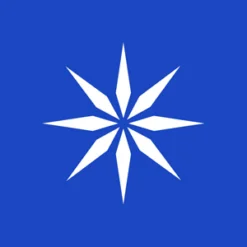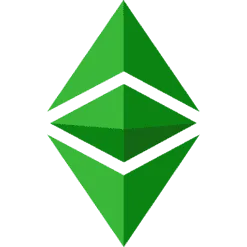About LayerZero (ZRO)
What Is LayerZero (ZRO)?
LayerZero is an omnichain interoperability protocol designed to enable seamless and trustless communication between different blockchains. It facilitates cross-chain transactions by allowing blockchain networks to directly interact with each other. LayerZero’s core focus is to provide a lightweight messaging system for the transfer of data, assets, and other messages between chains, ensuring both authenticity and guaranteed delivery.
Unlike traditional interoperability solutions, LayerZero can support any blockchain that can run smart contracts, including EVM-based chains (like Ethereum, BNB Chain, Avalanche, and Polygon) as well as non-EVM chains like Aptos. This flexibility makes LayerZero a versatile tool for a multi-chain future, where different blockchains need to work together seamlessly.
The protocol is powered by Ultra Light Nodes (ULNs), which are smart contracts deployed on each participating blockchain. These nodes act as endpoints for cross-chain communication, allowing the secure verification of cross-chain transactions using block headers and transaction proofs. This ensures that transactions are both secure and efficient.
Key Features of LayerZero (ZRO)
- Ultra Light Nodes (ULNs):
- ULNs are a cornerstone of LayerZero’s architecture. These smart contracts act as the interface for cross-chain communication, verifying the validity of messages and transactions across different blockchains.
- They work by verifying block headers and transaction proofs, ensuring that only legitimate transactions are processed. The use of ULNs helps to minimize trust assumptions, as participants can rely on them to verify cross-chain data without needing to trust a central authority or a full node on each chain.
- Generic Messaging:
- LayerZero enables not only asset transfers between chains but also any type of cross-chain communication. This includes function calls, data exchange, NFT transfers, governance votes, and more.
- The flexibility of LayerZero allows developers to create omnichain applications, which can leverage features and advantages from multiple blockchains simultaneously, leading to more dynamic and interoperable decentralized applications (dApps).
- State Sharing:
- LayerZero supports the concept of state sharing, where applications can share their state (e.g., user data, app logic) across multiple chains. This means that decentralized applications (dApps) can sync data and maintain logic across chains without relying on centralized servers.
- By sharing state, applications can operate seamlessly as a unified entity across multiple chains, reducing complexity and providing a better user experience. This feature enables cross-chain liquidity and cross-chain governance to work smoothly.
- Instant Finality:
- One of the standout features of LayerZero is its ability to provide instant finality for cross-chain transactions. Once a transaction is included in a block on the source chain, it is immediately confirmed on the destination chain without waiting for additional confirmations.
- This eliminates delays typically associated with cross-chain transactions and significantly improves the speed and usability of cross-chain operations. Instant finality is essential for real-time applications that require immediate transaction confirmation.
How Does LayerZero (ZRO) Work?
LayerZero is essentially a blockchain of blockchains, where various blockchains interact through secure message passing. Here’s a simplified breakdown of how it works:
- Cross-Chain Communication:
- When a user wants to send assets or data between two chains, LayerZero facilitates the transfer by utilizing Ultra Light Nodes (ULNs) on both the source and destination chains.
- These nodes work together to validate the transaction, ensuring that the data is legitimate and that the transaction adheres to the rules of both blockchains.
- Omnichain Applications:
- Developers can build omnichain applications (also called LayerZero-enabled apps) that use data, assets, and logic from multiple blockchains at once. For example, a DeFi platform could aggregate liquidity from multiple chains or a multi-chain NFT marketplace could list assets from various blockchain networks.
- These applications leverage the generic messaging capabilities of LayerZero, which support a wide variety of payloads (data types), making the protocol highly adaptable to different use cases.
- Ultra Light Nodes (ULNs):
- ULNs are smart contracts deployed on each blockchain involved in the cross-chain communication. They verify that the messages passed between chains are authentic by checking block headers and transaction proofs.
- This method of verification allows for low resource consumption, making LayerZero more efficient than traditional full nodes that download entire blockchain histories to verify transactions.
- State Synchronization:
- LayerZero allows applications to sync their state across chains without centralized servers, reducing the overhead and complexity of managing state separately for each chain. This helps applications maintain consistency in their logic and data, regardless of the blockchain they are interacting with.
- Instant Finality:
- The protocol guarantees that once a transaction is confirmed on one chain, it is immediately finalized on the other chain(s) involved in the transaction. This prevents issues like double-spending and delays, providing immediate assurance for cross-chain transfers.
Who Are the Founders of LayerZero (ZRO)?
LayerZero Labs, the company behind the LayerZero protocol, was co-founded by:
- Bryan Pellegrino – Co-Founder and CEO
- Ryan Zarick – Co-Founder and CTO
- Caleb Banister – Co-Founder and Chief Scientist
The company was founded in 2021 and has quickly gained traction in the blockchain community for its innovative interoperability solutions.
LayerZero Labs has raised significant funding from prominent investors, including:
- Andreessen Horowitz (a16z)
- Sequoia Capital
- PayPal Ventures
- Polygon
- Coinbase Ventures
- Binance Labs
- DeFiance Capital
- Spartan Group
- Sino Global Capital
- Multicoin Capital
The company raised $135 million in a Series B round in March 2022 and $120 million in another Series B round in April 2023, underscoring strong investor confidence in LayerZero’s potential.
What Makes LayerZero (ZRO) Unique?
LayerZero stands out from other blockchain interoperability projects for several reasons:
- Omnichain Support:
LayerZero supports a wide variety of blockchains, from EVM chains (Ethereum, Polygon, etc.) to non-EVM chains like Aptos. This broad support makes LayerZero a flexible solution for a diverse ecosystem of blockchains. - Ultra Light Nodes (ULNs):
Unlike traditional interoperability solutions that rely on full nodes, LayerZero’s Ultra Light Nodes enable efficient cross-chain communication by only requiring verification through block headers and transaction proofs, reducing overhead. - Generic Messaging:
LayerZero doesn’t just support asset transfers—it can carry any type of data across chains, including function calls, governance proposals, NFT transfers, and more. This opens the door for creating truly omnichain applications that leverage the strengths of multiple blockchains. - State Sharing:
The ability to synchronize data and logic across different blockchains allows LayerZero applications to function as a unified entity, providing seamless interaction for users and developers. - Instant Finality:
With LayerZero, cross-chain transactions are confirmed immediately, removing the typical delays involved with cross-chain operations. This enables faster, real-time applications that require instant transaction finality.
















Reviews
There are no reviews yet.